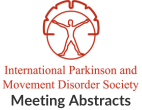Dystonia Treatment With Injections Supplemented by TMS: the D-TWIST Study
Objective: To evaluate the safety, feasibility, tolerability and effects of accelerated rTMS for treatment of cervical dystonia. Background: In a subgroup of patients with cervical…Incidence of dysphagia and comorbidities in patients with cervical dystonia, analyzed by botulinum neurotoxin treatment exposure
Objective: Describe real-world incidence of dysphagia and other comorbidities in adults with cervical dystonia (CD) treated and not treated with botulinum neurotoxin (BoNT). Background: Dysphagia…Topical Botulinum-Toxin-like Alternatives: A Systematic Literature Review
Objective: To perform a systematic review exploring the relevant literature on BoNT and BoNT-like substances in topical form and clinical trials focusing on facial muscle…blepharoplasty yes or not? a single-centre study on the influence of blepharoplasty on the treatment with botulinum toxin injections.
Objective: To compare the responses to the BoNT injections of patients who underwent or not to blepharoplasty (Blepharoplasty YES/NO), in order to clarify if the…Clinical presentation and evolution of isolated focal and segmental dystonia in adults – 20 years experience from a botulinum toxin clinic
Objective: To provide unique data on the common patterns of muscles selected for injection and the time course of benefit and weakness for BoNT injections…Treatment of upper limb dystonic tremors: a retrospective study
Objective: Our study aimed to evaluate the clinical outcome of patients with upper-limb dystonic tremor (UL-DTs) treated at a tertiary hospital in London. Background: Tremor…Impact of botulinum toxin treatment on gait in focal dystonia
Objective: To study the effects of botulinum neurotoxin (BTX) treatment on gait characteristics in patients with blepharospasm and cervical dystonia. Background: The impact of focal…Changes in botulinum toxin dosing in cervical dystonia over 7 years
Objective: To assess changes in botulinum toxin dosing over the course of illness of cervical dystonia. Background: Muscle specific botulinum toxin injections remains the main…Use of bupivacaine in the evaluation of acute secondary cervical dystonia (CD)
Objective: To highlight the potential use of bupivacaine/analgesics in assessing cervical dystonia, where disabling local pain can be a confounder and limits clinical examination. Background:…Botulinum Toxin Therapy for Medication and DBS Refractory Foot Dystonia of Parkinsonism
Objective: To determine efficacy and safety of BTX therapy in patients with medically refractory foot dystonia secondary to Parkinson’s disease (PD) or atypical Parkinsonism (AP)…
- « Previous Page
- 1
- …
- 4
- 5
- 6
- 7
- 8
- …
- 21
- Next Page »
